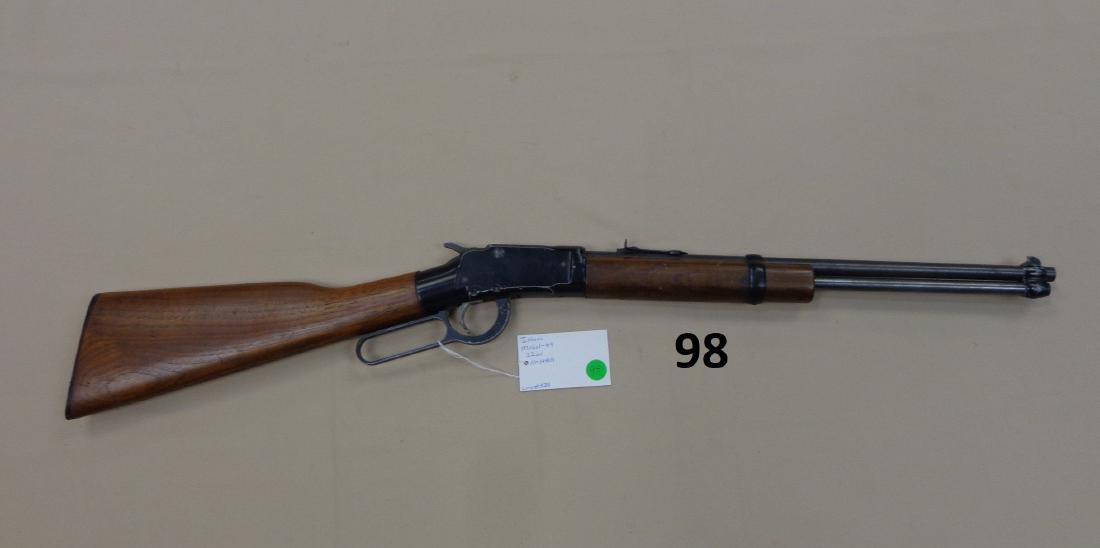

Model 700s have served as the basis for the U.S. Remington has made millions of 700s in dozens of calibers and innumerable configurations. In 1962 it was replaced by the short-lived Model 725, which gave way to the 700, which turned out to be one of the most successful long guns ever produced. The 721 looked cheap and was cheap-but also very, very accurate, so it did very, very well. The 700 began life in 1948 as the Model 721 when it became apparent to Remington that the era of cheap, skilled hand labor had come to an end, and gun companies that wanted to survive had better figure out a new way of doing things. You could make a good case that this is the first modern bolt-action sporting rifle, because it was the first such gun that was designed for ease of manufacture with little or no hand-fitting. Remington Model 700 The Remington Model 700. Now Ruger makes its own variants of the 10/22, and if you care to pay a considerable amount of money, any number of gunsmiths will build you something really fancy. Then someone discovered that if you put a match barrel on one, and replaced the factory trigger with a good one, the 10/22 would really shoot. A member of the class of 1964, the 10/22 began simply as a nicely designed semiauto rimfire with a magazine that actually fed and an attractive price. 22 rimfire rifle in the world and, along with the AR-15, the most cobbled-on. Will it replace the bolt action as the sporting rifle of the future? I would not bet against it. Few rifles are as highly developed or offer as many options for use. It is a cult gun, dearly loved and furiously defended by its admirers. Right now, the AR is a hugely important part of the firearms industry. And a properly tuned AR with a good barrel and a match trigger will shoot just as well as nearly any bolt action. All the cartridges designed for it are small, and the gas operation and recoil-buffer spring reduce kick even further. It’s easier to pick one up and hit with it than it is with anything else that I know of. It is ergonomically superior to traditional rifles. You can tear it down and put it back together in a different form. All at once, it seemed, younger shooters discovered that the black gun had advantages found nowhere else. Brought on the civilian market in 1965, the AR-15 was virtually ignored until well into the 21st century, but then it caught on with a rush and a roar. It, and its carbine successor, the M4, is still very much on active duty. Yet it has gone on, in highly modified form, to be our longest-serving infantry rifle. NRA Museums/Ĭan a firearm have a stranger history than this one? The M16 (the military version of the AR) was issued as our main infantry rifle in 1966, but its debut was botched to a degree unequaled in the history of military ordnance. In any event, enjoy, and when you e-mail to inform us we’re a couple of ignorant swine, check your spelling and punctuation. Fox would teach his grandmother to suck eggs. Anyone who would tell you that a Weatherby Mark V is “greater” than an A.H. It’s simply the top 50 choices in no kind of order at all. This list is not compiled in order of greatness. Other factors: longevity (the Mosin-Nagant), sheer excellence (the Purdey self-opener), and general-horribleness-but-still-works-like-a-son-of-a-bitch (the Mossberg 500). The Remington Nylon 66 made synthetic stocks not only acceptable but desirable, and the Smith & Wesson Model 29 altered our concept of what a handgun could do. This spring assist is absent in the design of the Remington 870 and Ithaca M37, for example.There are a number of ways a gun could make this list: The first was to change the course of firearms design. As the spring releases its energy, it pushes the bolt and slide assembly rearward–the idea being that this helps the gun cycle faster. It is the inertia of the bolt, which moves forward in relation to the rest of the recoiling gun, that gives the “inertia” action its name. The bolt assembly contains a powerful spring that compresses under recoil. The bolt face has a four-lug design that rotates into corresponding recesses in the back of the barrel. The extra half inch of travel makes a big difference in how quickly the gun will run.)īut what the claim does speak to is how the SPX’s action locks up and functions. (If speed really is that important to you, though, stick with the 3-inch version. In a duck blind or a goose pit, things don’t unfold quite that fast, thank goodness, or very few of us would ever manage to knock down any birds. Pretty heady stuff, though even if you could shoot that fast (which I can’t), it’s hard to see how that is relevant outside the confines of exhibition shooting.


 0 kommentar(er)
0 kommentar(er)
